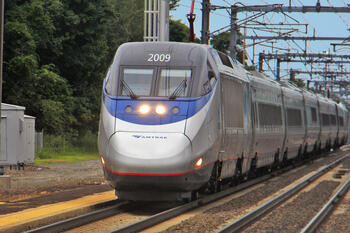
Amtrak is maintaining the twin fictions that subsidies from state taxpayers are “passenger revenues” and that depreciation isn’t a real cost even though its accountants list it as an operating cost on its consolidated financial statements. Based on these fictions, Amtrak claimed that it was “on track to break even financially for the first time in its history” in 2020.
The pandemic derailed that fantasy, so now Amtrak claims that it lost $801 million in fiscal year 2020 (which for Amtrak ended on September 30). Yet a close look at its unaudited end-of-year report reveals that the actual operating losses were well over $2 billion.
The end-of-year report says that Amtrak received $342 million in state operating subsidies, up $110 million from 2019. It counts these as passenger revenues even though most of the passengers on state-supported trains would never have ridden those trains if they were asked to pay the full fares.
Counting these subsidies as revenues allowed Amtrak to claim that its net income was minus $801 million. However, it then adds depreciation and a few other costs, bringing the loss to $1.69 billion. Depreciation in 2020 grew to $926 million, up by $50 million from 2019, suggesting that Amtrak’s physical plant is deteriorating faster than ever.
To partly offset depreciation, Amtrak adds amortized state capital subsidies of $133 million to operating revenues. Yet this is just another subsidy, not a revenue. When all state subsidies are deducted from revenues, Amtrak’s total loss in 2020 was $2.17 billion. This doesn’t count actual capital spending, which was $1.9 billion, up from $1.6 billion in 2019. Amtrak therefore cost taxpayers $4.1 billion in 2020.
Ridership and passenger miles were both approximately half of what they were in 2019. The pandemic only affected half of Amtrak’s fiscal year, but ridership during that half was just 4 percent of 2019 levels.
Amtrak continues to pitch for a $2.9 billion bailout for 2021 on top of the $2 billion it normally gets from Congress. By comparison, the airlines have asked for a $28.8 billion bailout for 2021, about ten times as much as Amtrak wants. But the airlines normally carry more than 100 times as much passenger travel as Amtrak.
Neither bailout happened this year due to Republican opposition. There is significant opposition to another airline bailout. We can only hope that opposition will carry over to Amtrak as well.
This piece first appeared at The Antiplanner.
Randal O'Toole (rot@ti.org) is a senior fellow with the Cato Institute analyzing land-use and transportation policies and the author of American Nightmare: How Government Undermines the Dream of Homeownership.
Photo credit: Michael Kurras Wikimedia under CC 3.0 License.












